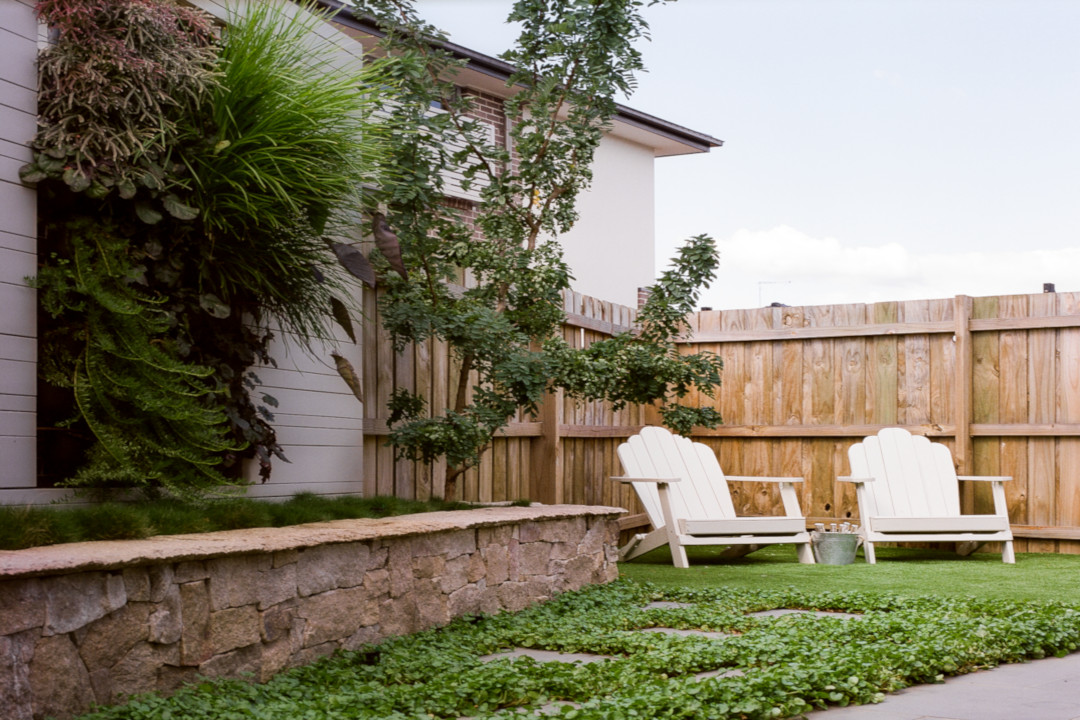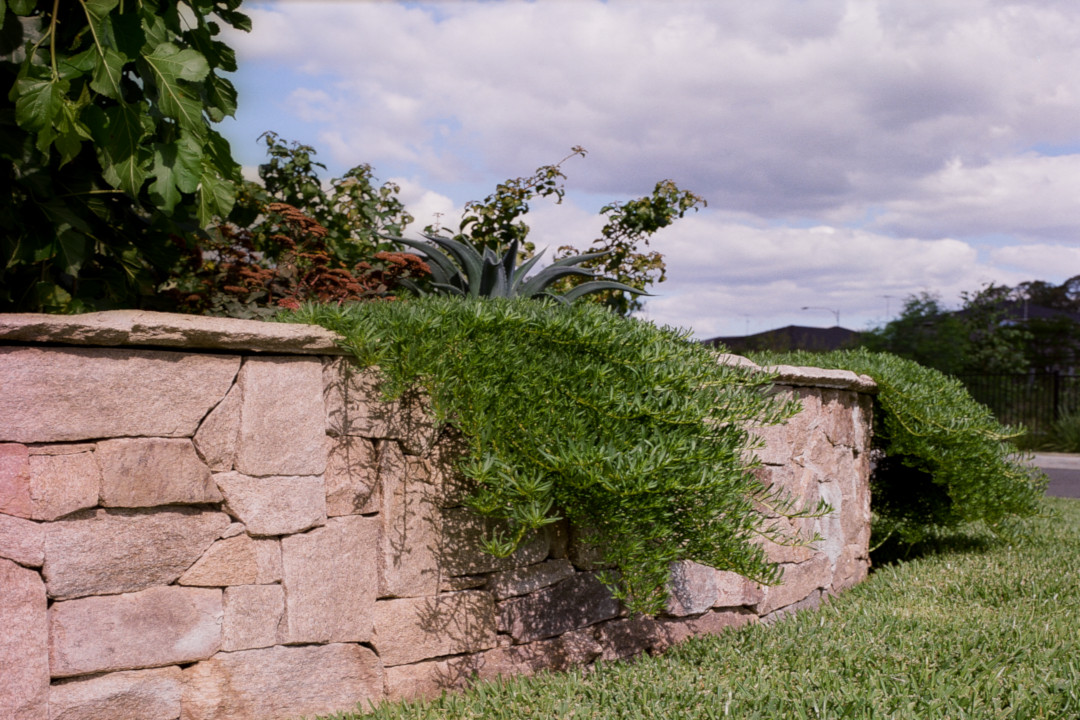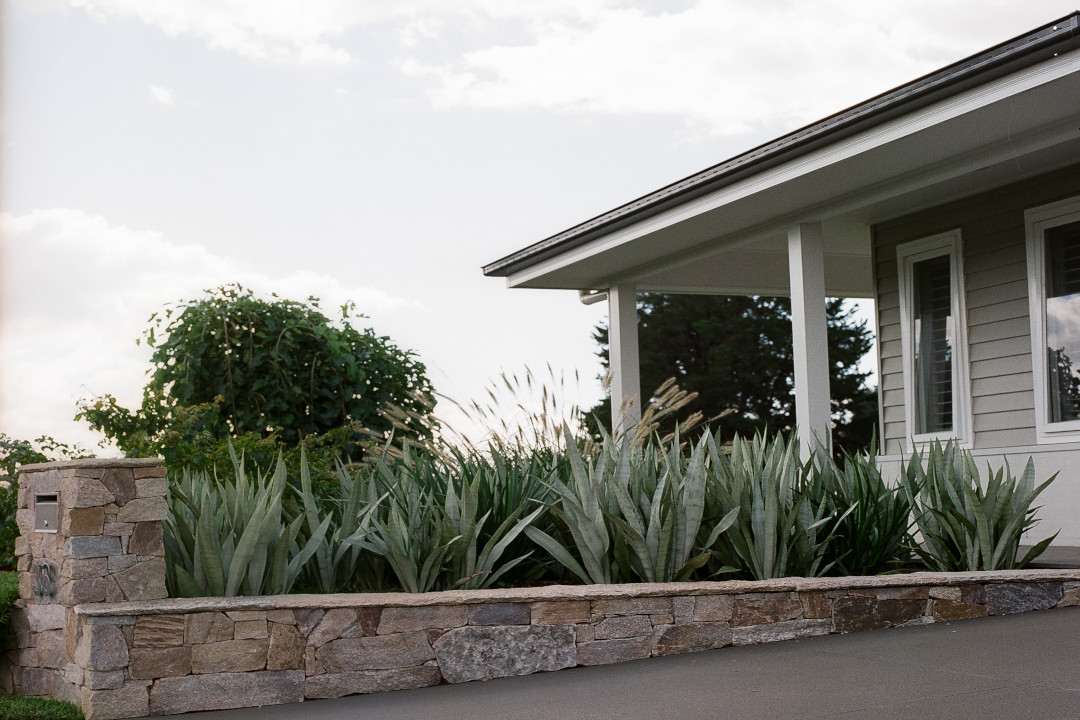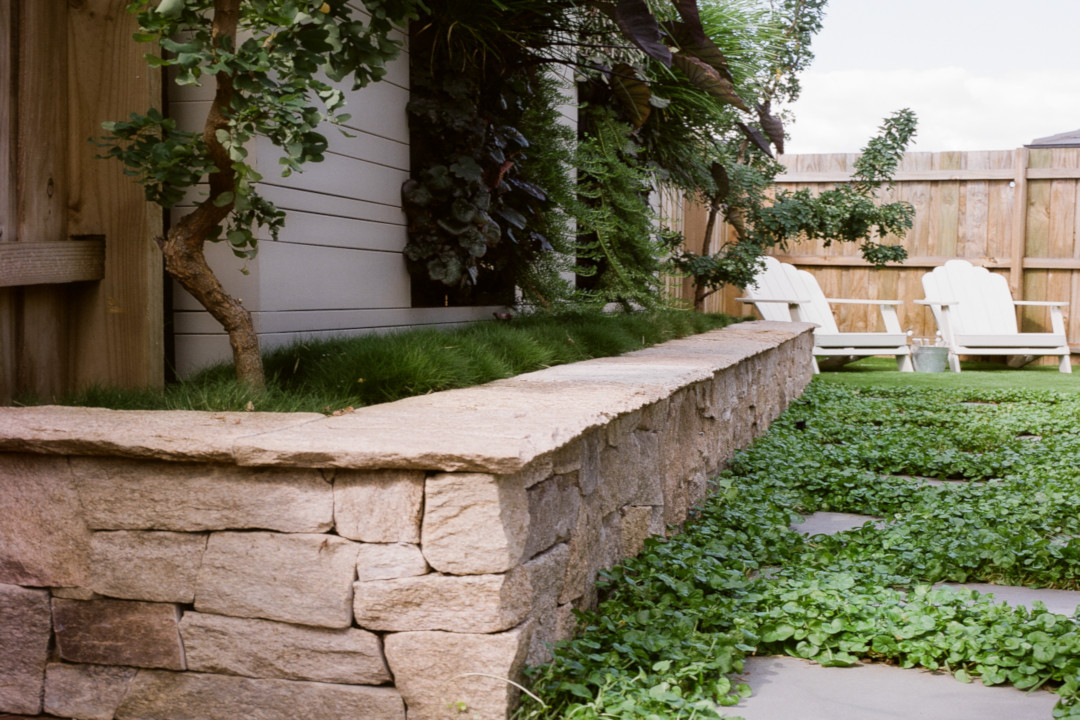As Green As It Gets
Words by Simi West
A green wall, or a vertical wall, is a wall of greenery with a growing substance, such as soil, water or a substrate. Multiple plants are placed around one another in order to create a unified and fruitful look. Vertical or green walls are quite self-sufficient, and are usually attached to the exterior or interior of a building. In the garden, green walls can also be installed along your fence line. They are great for biodiversity; by using a wide range of plants, a green wall can attract different species of birds and insects in an area, helping to create a more sustainable ecosystem in the urban environment.


Green walls help reduce UV damage to surfaces and have the power to protect a building from wind and the harsh Australian sun. It also has the power to clean the outside air of pollutants and dust and remove harmful toxins like formaldehyde, greatly improving air quality alertness and energy levels. Green walls are an excellent way to enhance a building’s visual appeal and have the added benefit of acting as a sound-proofing barrier. Drew Lamond, director of Bayview Landscapes, explains the rising trend of the vertical wall and how to incorporate greenery into your garden to establish a healthier environment and greater overall aesthetic.
What is a green wall and how can it be incorporated in an outdoor space?
DL: A green wall is a mass amount of plants, planted in small pots and hung from a wall or screen. I have used them on many occasions inside a timber screen to break a mass amount of timber. Having a lot of green plants with the odd deeper colour mixed throughout is the ultimate statement piece.
When designing a garden, what are the key factors that need to be considered?
Functionality, budget and lifestyle factors are the key components that need to be considered. You have to think about your client’s needs, how much the client wants to spend, and how much time the client has to maintain or spend in the garden.


What are your top three tips for designing a planting palette?
Maintenance – how much time does your client wish to spend taking care of the garden? You also have to think about water. Does your client have irrigation, or will they be hand watering? Lastly, style – are your clients after traditional planting, tropical planting or something different? The style of their home may make the decision easier for you.
What types of plants would you recommend to people looking to achieve a lush effect in their landscaping?
The slender weaver bamboo helps to achieve a lush effect in your landscaping. This is perfect for a green wall and for privacy. The heliconia is another lush option with a big leaf and beautiful red flower. The philodendron xanadu has an interesting shape, where the leaves bulk out to fill a space perfectly. The alocasia, coined ‘elephant ears’, is a statement plant, with large, beautiful leaves. A bromeliad also adds a beautiful bit of colour and makes for an excellent feature plant.
In your opinion, what are the most popular plants in contemporary landscape design and why do you think they are faring so well?
My favourite plant to use at the moment is asparagus myersii. I absolutely love the shape this plant forms. Also, zoysia tenuifolia, which creates a green cloud that is reminiscent of a European countryside. Both plants are low maintenance and create their own amazing shape. With many people being so time poor these days, it’s great to have plants that form their own shape.
What are some great plant combinations and what care is involved?
I love a nice agave, like ‘Blue Glow’ [when it is] underplanted with the zoysia tenuifolia. Having the sharp lines of the agave rise from the soft cloud of the zoysia is a great effect and not a huge amount of maintenance is involved with either plant.


What are some low-maintenance plants you would recommend?
Ground covers such as dichondra and native violet. Just let them grow and move where they want. These are perfect for having around stepping stones and for embankments. They also eliminate the need for future mulching in the area.
This job (pictured) is the jewel in the crown for Bayview Landscapes. The way we have integrated the different materials to seamlessly work together was so satisfying. The feature piece of the green wall is the ultimate conversation starter for all of our client’s guests, and can be seen as soon as you walk through the front door.
There are many reasons to get started on a green wall. With a plethora of health, building protection and aesthetic benefits, going green has never felt so good.
Images courtesy of Bayview Landscapes
